|
HOME: www.hiltonpond.org |
|||
THIS WEEK at HILTON POND Subscribe for free to our award-winning nature newsletter (Back to Preceding Week; on to Next Week) |
THE TRUTH ABOUT RUBY-THROATS Across the eastern U.S. and southern Canada populations of Ruby-throated Hummingbirds (RTHU) are increasing noticeably--the result of this year's new crop of youngsters. Thus, it's almost hard to accept that in two months nearly all these hummers will have disappeared from our feeders and backyard habitats. When October arrives about 95% of ruby-throats will have departed Hilton Pond Center and points north, and by mid-month nearly all will be gone from North America. There are exceptions, of course, with ever-more RTHU overwintering along the Atlantic and Gulf Coasts--climate change, ya think?--but for the most part any nectar-eater we host after Halloween is likely to be a Rufous Hummingbird or some other western vagrant species.
All text, maps, charts & photos © Hilton Pond Center All this brings to mind a well-meaning e-mail we got this week from a birding business that made numerous errors in its information about hummers and, in particular, about Ruby-throated Hummingbirds (adult male, above). These were misconceptions commonly believed and frequently passed on from one hummingbird enthusiast to another--what a correspondent has astutely called "casually incorrect" information. See how many mistakes you can spot in the following communication:
We got at least five false or misleading hummingbird statements. Our corrections are outlined below:
All text, maps, charts & photos © Hilton Pond Center 1. No North American hummer migrates to South America. Ruby-throated Hummingbirds fly as far as western Panama, which is in Central America (see map above). That's a remarkably long flight as it is; no sense gilding the lily by claiming hummers go all the way to Ecuador or Colombia or beyond. Incidentally, the rest of North America's 15 or so migratory hummers don't appear to go much further south than Mexico, and some species are mostly sedentary year-round residents within their breeding range.
All text, maps, charts & photos © Hilton Pond Center 2. Ruby-throated Hummingbirds are NOT the only hummers in eastern North America. As noted, Rufous Hummingbirds (adult male, above) commonly occur each winter across the eastern U.S., and several other western migrants appear on a regular basis--sometimes even in summer. We've banded a Rufous Hummingbird on 30 August in South Carolina and seen one as early as 1 August, so it's safe to say this species can overlap with ruby-throats for two months in autumn. To further emphasize that OTHER hummers occur in the eastern U.S. we note North Carolina has hosted at least 11 different trochilids at various times of the year; South Carolina now has eight accepted hummer species on its official checklist of birds.
All text, maps, charts & photos © Hilton Pond Center 3. To say that male Ruby-throated Hummingbirds have metallic red gorgets is misleading; the statement should be qualified by saying only ADULT male RTHU have ruby throats. Some immature males closely resemble females with white throats;
All text, maps, charts & photos © Hilton Pond Center 4. Obvious colors except white in Ruby-throated Hummingbirds are indeed iridescent; there is no green or red pigment, only black melanin. (Black areas of the bird--including the bill and feet--reveal the presence of microscopic melanin granules.) In direct light tiny air bubbles and grooves in the hummer's feathers demonstrate the phenomenon of "scattering"; a hummer's back feathers absorb all wavelengths except green, while the adult male's gorget scatters only red. In dim or indirect light this scattering is much less obvious, so both male and female hummers will look darker; that said, I've never seen an adult male ruby-throat appear "brownish"--only dark in dim light. It's also a bit misleading to claim significant gender-based differences in the green on the backs of male and female hummers. Up close there is an amazing degree of individuality in feather color, with some birds of either sex appearing almost bronzy; in addition, immature ruby-throats often have green back feathers edged in brown (above). Even the red in the gorgets of adult male ruby-throats varies noticeably from bird to bird.
All text, maps, charts & photos © Hilton Pond Center 5. And finally, we don't think it's all that rare to see more than one Ruby-throated Hummingbird at a time--except when you have just one small feeder and few birds. The species IS highly territorial with dominant males defending home turf against all comers, and females patrol nest sites and feeding areas. A male, however, may recruit a sort of "harem" in which he services several females in a given breeding season--a polygynous relationship--with all these females possibly appearing more or less simultaneously within the male's territory. (We should point out the actual pair bond is short-lived, with the male not participating in incubation, brooding, or nestling care. He guards his territory, not "his" females.) Furthermore, as the summer progresses and more and more young hummingbirds take wing, chances greatly increase for having two or more Ruby-throated Hummingbirds perching on or hovering at your feeder at the same time (see photo above). To increase chances of seeing lots of hummingbirds together, improve your hummingbird habitat, add more feeders, and keep your 4:1 sugar water fresh. Some folks may think we're nit-picking to point out these incorrect statements in a mailing from a birding-related company, but one of our responsibilities is to be as accurate as possible in what we tell people about about Ruby-throated Hummingbirds and other aspects of nature. Humans will never truly understand these little birds if we disseminate even seemingly harmless "casually incorrect" information. . . . AND MORE HUMMINGBIRD FACTS
All text, maps, charts & photos © Hilton Pond Center With our fact-checking out of the way, we'll mention some other interesting hummer items that came to light in recent days at Hilton Pond Center. For example, on 10 August we captured an adult female Ruby-throated Hummingbird with extensive molt in her throat, face, and forehead. The photo above shows numerous "pinfeathers"--developing feathers still bound into quills--as well as some facial feathers already beginning to break out of their sheaths. It would be quite unusual to find an immature ruby-throat undergoing such heavy contour molt during summer in North America. Many adults and a few youngsters do start head molt up north but most immature RTHU acquire a new and complete set of feathers (head, body, wings, and tail) only after arriving on the wintering grounds.
All text, maps, charts & photos © Hilton Pond Center This week we also caught a male Ruby-throated Hummingbird with his own style of unusual throat molt, although it was fully red and indicative of an adult. The odd thing was this bird had two generations of red feathers--older ones that were duller and more bronzy, and a few (upper left in photo) with a more familiar ruby tinge that meant they were new. We've seen this molt pattern only a few times in 600-plus adult male RTHU banded at Hilton Pond Center but believe it reveals something specific about this particular bird's age, to wit: Young males replace white throat feathers with red ones. Since this individual was replacing red feathers with more red feathers, he's not just a "second year" or "after hatch year" bird that fledged in 2013. He's an "after second year" adult that must have hatched in 2012 or earlier; i.e., he's in at least his third year.
All text, maps, charts & photos © Hilton Pond Center And just a reminder that all Ruby-throated Hummingbirds captured at Hilton Pond Center receive a numbered aluminum band AND are marked on the upper breast or throat with non-toxic temporary GREEN dye (female RTHU, above). Because we cannot see its tiny band when a hummingbird enters a trap, we apply the mark to tell us the bird's been captured previously and there's no need to pull the string for a re-trap. This saves considerable wear and tear on those ruby-throats that are "trap junkies" that enter the same trap dozens of times per day; when carrying visible color marks they're able to feed and depart on a regular basis without having to be handled over and over and over again. In addition to minimizing re-traps, the color mark allows folks away from the Center to observe and report birds we have banded. If you see one of our green-marked birds--no one else is permitted by the federal Bird Banding Laboratory to use this particular marking scheme--please try to get a photo and let us know immediately at INFO. Color marked birds from Hilton Pond have provided lots of valuable data about Ruby-throated Hummingbird migration, particularly southbound in autumn. (NOTE 1: We use BLUE dye on RTHU we band in Costa Rica and PURPLE on those in Belize, so you might keep an eye out for these birds during spring migration. NOTE 2: Other banders may use different marking schemes, including various pastel colors of "White-Out" on the hummer's crown or back. Please report these also.)
All contributions are tax-deductible on your . . . PLUS YOUR BIG CHANCE TO WORK WITH HUMMERS IN THE NEOTROPICS
All text, maps, charts & photos © Hilton Pond Center Yes, Ruby-throated Hummingbirds are what we call "cold weather wimps" that bail out of temperate North America each fall and migrate south to Mexico and Central America where they spend our chilly months in warm tropical locales. Because we can't study RTHU in winter at Hilton Pond Center, since 2004 we've led enthusiastic groups of citizen scientists--birders, hummer lovers, nature photographers, teachers, and other adults--for hummingbird expeditions to Costa Rica. As part of Operation RubyThroat: The Hummingbird Project we've also in recent years traveled with our citizen scientists to Belize, Nicaragua, and Guatemala. In all we've led 23 Neotropical excursions during which we've banded more than 1,100 ruby-throats as the only researchers studying this species where it spends the OTHER half of the year. More than 165 folks have participated in our educational trips, and more than 30 have been on more than one expedition. Participants get incredible up-close views of tropical flora, birds, and other fauna while helping capture, observe, and study Ruby-throated Hummingbirds. Food and lodging are always up to our high standards and no one ever complains about the life-changing opportunity provided by an Operation RubyThroat excursion--each of which includes informative side trips to cultural, historical, and natural landmarks.
All text, maps, charts & photos © Hilton Pond Center This fall we'll be going back for the fourth time to the Ujarrás in Costa Rica's Orosi Valley (above), where our team discovered a wintering flock of Ruby-throated hummingbirds far east of where they were "supposed to be." During this nine-day Operation RubyThroat we'll spend six days conducting field research in an expansive plantation of Chayote, a squash grown commercially for export to the U.S. Trip dates are 8-16 November 2014 (that's Saturday through the next Sunday so folks who aren't retired will miss just five days of work). We still have a few slots available for this expedition, so check out the itinerary at Costa Rica East and sign up today. (Nine-day trip cost is $1,995, plus air.)
All text, maps, charts & photos © Hilton Pond Center After Christmas we'll return for our 13th expedition to Guanacaste Province on Costa Rica's Pacific Coast, where Ruby-throated Hummingbirds are attracted by fields of Aloe Vera plants whose tubular flowers are nectar-rich. Guanacaste (above) is quite different from most of Costa Rica, with tropical dry forests growing on volcanic mountain slopes juxtaposed against lush saltwater beaches. Registration is now open for this Operation RubyThroat trip scheduled for 24 Jan thru 1 February 2015; it follows the same itinerary as our Costa Rica West trip in 2012. (Nine-day trip cost is $ plus air.)
All text, maps, charts & photos © Hilton Pond Center In our annual Belize expedition is currently restricted to students from Keystone College in Pennsylvania; they've been to Crooked Tree Sanctuary with us to study hummingbirds on two previous spring breaks. At Crooked Tree the hummers visit flowering Cashew trees and tank up on sweet nectar as they are heading back north in spring migration. Lodging is at world-famous Bird's Eye View Lodge on the edge of a freshwater lagoon filled with hundreds of thousands of waterfowl and wading birds (above). If the college is unable to fill the Operation RubyThroat trip by early autumn we will open it for public participation. Dates for the eight-day Belize expedition are 14-21 March 2015. (Pricing to be announced.) Our trips fill quickly. Prices cover all land costs (lodging, food, activities, instruction, side trips, etc.) and are based on 12 participants; air fare, tips & exit tax are extra. To inquire further or to reserve your space, contact Debbie Sturdivant Jordan with Holbrook Travel toll-free at (866) 748-6146. For complete reports on all of Operation RubyThroat's successful Neotropical Hummingbird Banding Expeditions, please visit
All text, maps, charts & photos © Hilton Pond Center . . . AND ATTEND THIS WEEK'S Our final note this week about hummingbirds: If you're in or near Fayette County, West Virginia this weekend (Saturday, 23 Aug 2014, 8 a.m.-noon), come on out to Lively Amphitheater in downtown Oak Hill for our annual New River Hummingbird Festival. We'll be trapping, banding, and releasing Ruby-throated Hummingbirds, talking about our hummer research, and giving hints on how to use native plants to attract hummingbird to your backyard or school-grounds. No admission charge; bird feeders and Operation RubyThroat T-shirts will be on sale.
All text, maps, charts & photos © Hilton Pond Center | ||||||||||||||||||||||||
|---|---|---|---|---|---|---|---|---|---|---|---|---|---|---|---|---|---|---|---|---|---|---|---|---|
Hilton Pond Center for Piedmont Natural History and Operation RubyThroat: The Hummingbird Project are now registered as an organization/project eligible to receive donations amounting to 0.5% of each and every Amazon purchase you make through AmazonSmile. We know many of you are frequent Amazon customers, so it's merely a matter of placing your orders through AmazonSmile after designating Hilton Pond Center as your desired recipient. You might not think 0.5% is much of a donation, but that's 50 cents on every $100 you spend; it doesn't cost you a penny and those donations can really add up. Please click below and begin helping Hilton Pond Center and Operation RubyThroat in this nearly effortless way. Don't forget: Your purchases need to be made via AmazonSmile.com rather than Amazon.com. Same company, just a different route for donations. |
|
"This Week at Hilton Pond" is written and photographed by Dr. Bill Hilton Jr., executive director of Hilton Pond Center for Piedmont Natural History.
|
|
|
Please refer "This Week at Hilton Pond" to others by clicking on this button: |
Comments or questions about this week's installment? Send an E-mail to INFO. (Be sure to scroll down for a tally of birds banded/recaptured during the period, plus other nature notes.) |


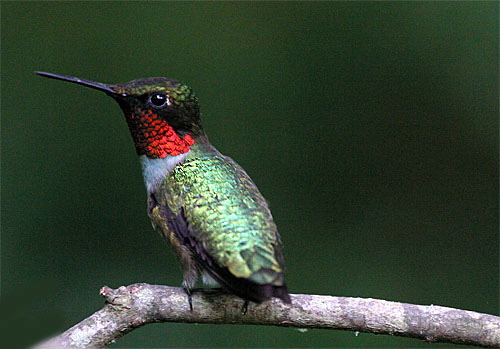
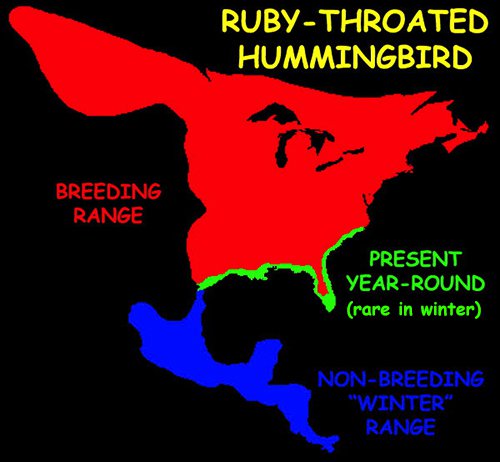

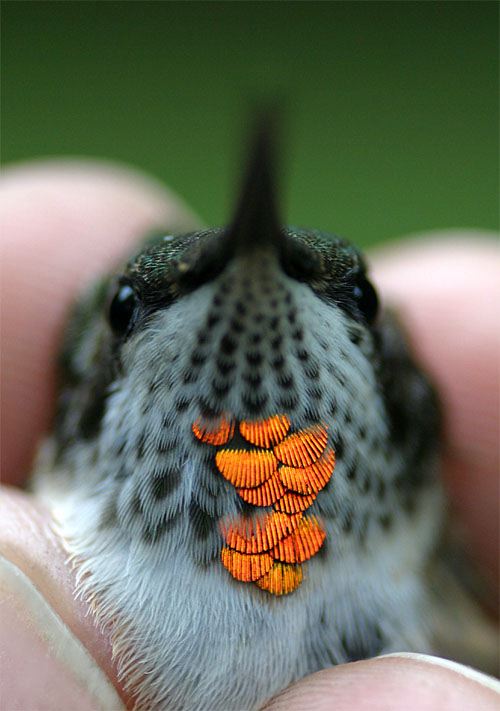
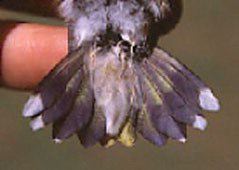 others have dark green or black throat streaking and/or one or more red gorget feathers
others have dark green or black throat streaking and/or one or more red gorget feathers 
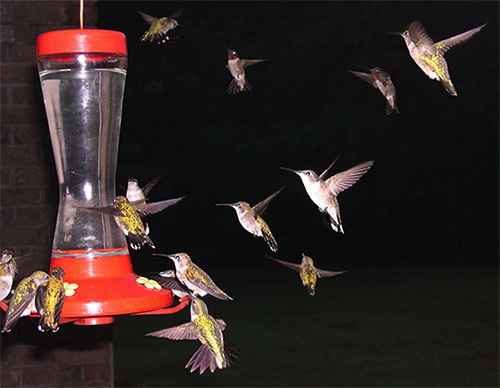
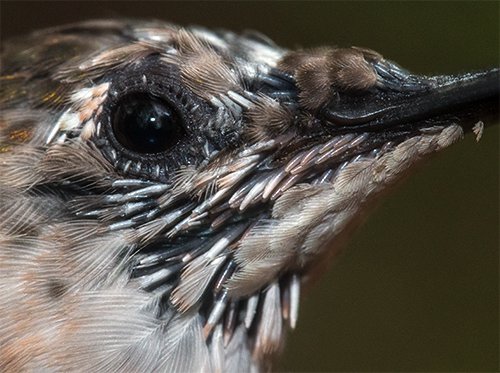
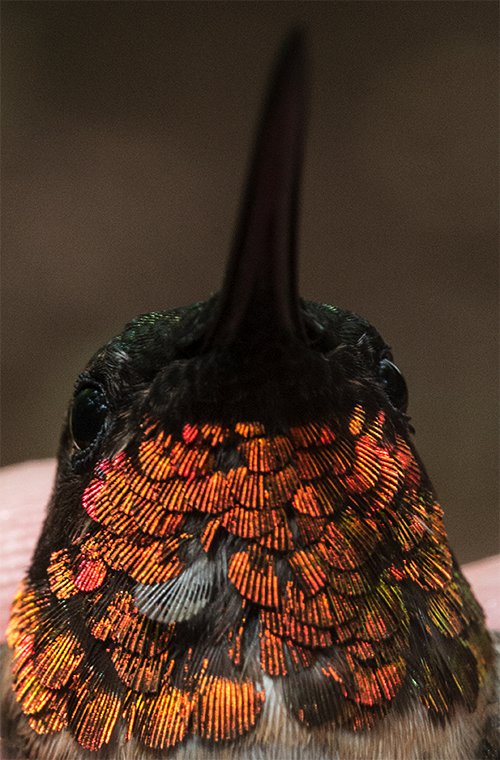
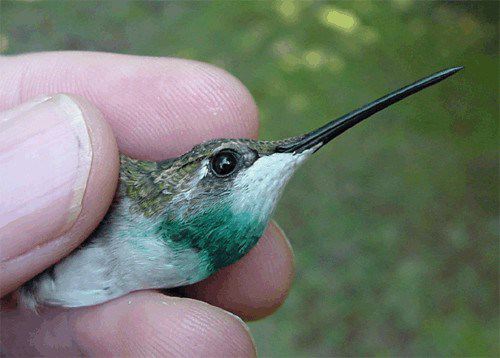



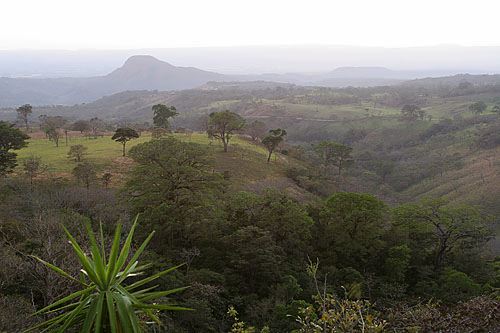
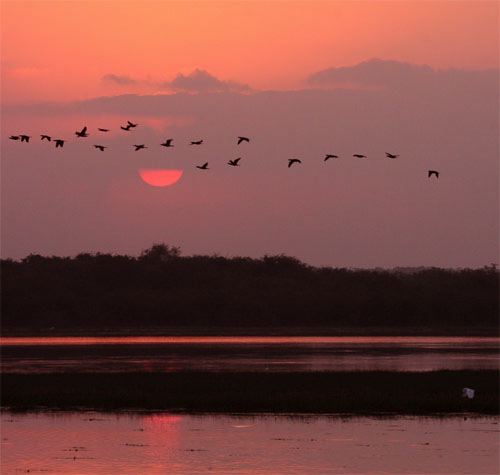
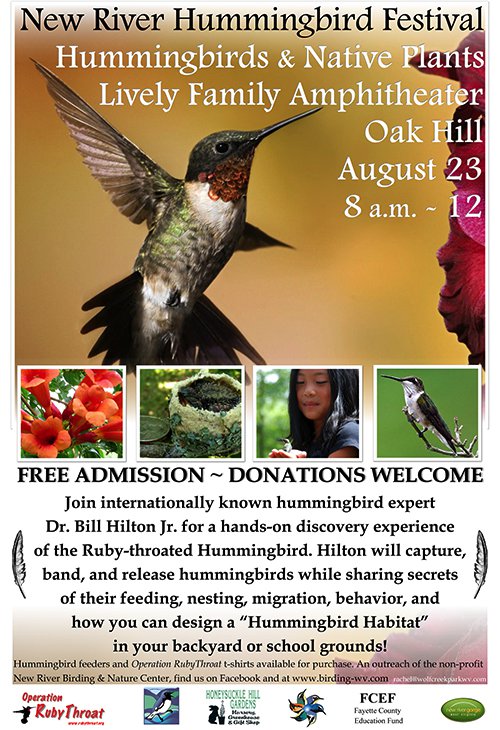






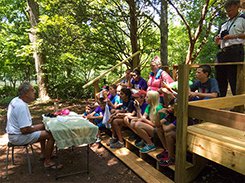

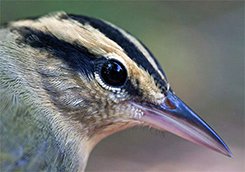
 Please report your
Please report your